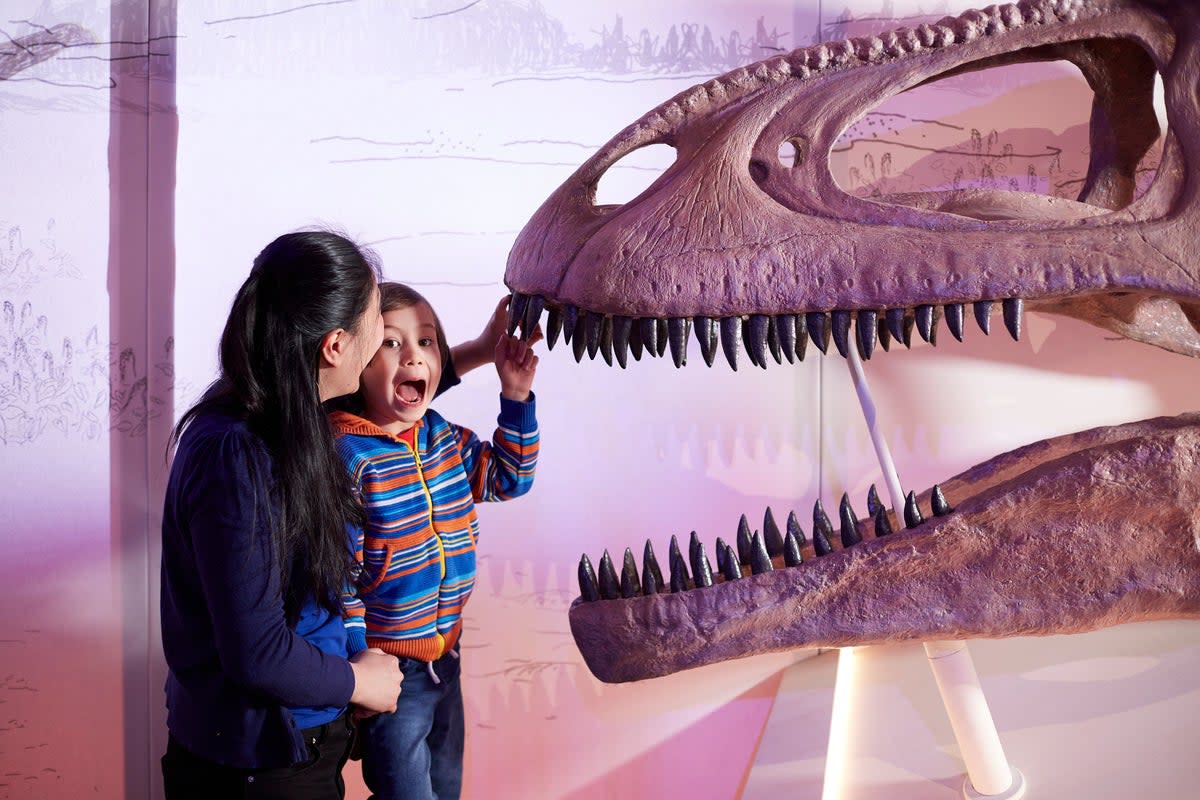Titanosaur: Life as the Biggest Dinosaur at the Natural History Museum review - totally rooaarsome

The odds of survival aren’t great – just one in 100 – but the rewards are superlative: a chance to be one of the largest animals ever to walk the earth. That is what it was like being born a Patagotitan, the star of the Natural History Museum’s new exhibition on Titanosaurs.
Patagotitan young were as miniscule as the mature adults were gigantic. Freshly hatched from a 15cm egg, they weighed as much as a human baby. Fully grown they were 57 tons. Put another way, the little vegetarian hatchlings had to increase their bodyweight by an awe-inspiring (and scarcely believable) 16,000 times. That’s a lot of ferns to munch.
Awe is the aim of the Natural History Museum’s game here. Visitors walk almost straight into the real thing – a femur of a Patagotitan, discovered on a remote Argentinian farm in 2010. It is an instant moment of magic. This single thigh bone is 101 million years old and far taller than an adult human male. How, you wonder, could any animal ever have grown so big?
This exhibition – aimed at families with children from five and older, as well as adults – then sets about answering that question. Walls feature elegant and spare black and white illustrations of the world of Titanosaurs, designed to stimulate (rather than dictate to) the imagination. Sounds are ambient and atmospheric, interspersed with roaring predators, flooding rivers, and cracking eggs.
Pleasingly tactile displays disgorge information – probably the highlight is the scale allowing you to compare your weight to Patagotitan (spoiler: it isn’t good news for the chunky reptile), while engaging games let you navigate the perilous journey of the offspring towards adulthood.

It was perilous indeed and more often than not fatal. Patagotitan parents had what we would now term a rather laissez-faire approach to raising their children. Like almost all dinosaurs they took a quantity not quality approach. They abandoned their many eggs, often on the slopes of volcanoes. Duty of care, it ain’t.
After hatching, the miniature creatures faced an instant battle for survival with the odds stacked against them. Were I a Patagotitan, I would be aggrieved that despite being the largest known land animal, I was still victim to predators ranging from Tyrannotitan (exactly what it sounds like – a massive carnivore) to Genyodectes, whose name translates as “jaw bite”, and started life so small and vulnerable. Not fair. I guess that’s life in the Cretaceous.
But if you made it, you ended up very large indeed. Coming face to face with the life size replica is of course the highlight. It cannot be contained by the room in which it’s housed (eagle eyed visitors will notice its tail looming above them as they inspect the early exhibits). Patagotitans could reach 37.5m in length, which is longer than three double decker buses in a row. One of the scientists who worked on the exhibition told me these animals were pushing the limit for what was possible for muscle and bone.
Stand beneath its ribcage, while its legs tower over you, and I challenge you not to feel a childlike sense of wonder.
Other highlights include treasures from the Museum’s own collection: a Patagotitan egg, a giant hockey ball-like fossil discovered before the word dinosaur was even coined; a section of fossilised mud imprinted with dinosaur scales (how we know the terrifying lizards indeed were scaly things), and a display showing the size of Patagotitan’s heart, which is enormous – by this point you think you should no longer be surprised by the XL scale on display everywhere, but you are.
Though it can feel a touch brief, there’s much to marvel at, play with and learn about, surely the goal of any dinosaur exhibition. The only problem is, once you’ve seen the biggest of the lot, every other dinosaur suddenly starts to look a bit puny.
Natural History Museum, from March 31 to January 7; nhm.ac.uk

 Yahoo News
Yahoo News 
